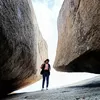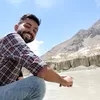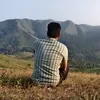Travel Forum
Get answers & discussion from real Tripoto travelers
Search Questions
How To Get The Tibet Travel Permit or Tibet Entry Permit? Obtaining a Tibet Entry Permit requires a booking tour through a travel agency in Tibet. By traveling as a group accompanied by a tour guide and driver, you can get your permit with a travel agency’s help with your valid passport and Chinese Visa. (This means that Independent travelers are not allowed to visit Tibet.) We will apply for packaged Permits (including TTB Permits and other necessary permits) for you to have a worry-free tour in Tibet. It usually takes about 15~20 days to obtain the permit (apply, wait for approval, and receive the permit). Tibet focus travel & tours will give free permits for all travelers worldwide. For more information, please visit: https://www.tibetfocus.travel/travel-guide/tibet-travel-permit/
Any female wanted to work from himalaya... please mail at kajal.kuchinda@gmail.com
1 Response

kajal mohanty
7 Days Itinerary for a trip to Jagannath Puri and Kolkata from Indore?
1 Response

Ankit Nyati
2 nights Kolkata take 1 night in deoghar again 1 night in Kolkata take a flight to bhubaneswar than 2 nights puri and last night a bhubaneshwar 8th day checkout and fly out to Indore .
Offbeat location in Himachal?
1 Response

saniket makeshwar
Question is asked in "Offbeat Travel" tribe
Only tribe members can answer thisThere are number of Offbeat places to be covered in Himachal Pradesh
Chindi Karsog Chanshal Pass Barot Valley Janjheli Shikari Devi Pangi Valley
Hi Rohit, 8 days are great plan for Meghalaya and if you are planning to do a road trip where you are travelling to offbeat places with less to no crowd and touristy as well, here is a suggestion on Khasi Hills Day 1: Land in Guwahati in morning, drive till Shillong and visit the canyon
Day 2: Drive towards West Khasi hills for an offbeat location and the second largest river island Nongkhnum
Day 3: Drive towards Mawlyngbna for some adventure activities. See Bangladesh border from afar. Cross Mawsynram- the place which receives the highest rainfall
Day 4: Reach Cherrapunji and if you have time visit
- wei sawdong
- Dainthlen Falls
- Nohkalikai Falls
- Nohsnithiang Falls (7 Sisters Falls)
- Mawsymai Caves
- River of Caves. Day 5: Cherrapunji - Nongriat trek and double decker bridge
Day 6: Leisure day at Cherrapunji as the trek could be tiring
Day 7: Dawki for clyster clear river
Day 8: Go back to Guwahati For more travel trip subscribe on Youtube: We travel a little
https://youtube.com/@Wetravelalittle
2 days shillong, 2 days mawlynnong (worth it), 2 days cherrapunji, 1 day guwahati. Below are detailed guides to all the above places. I hope it helps you.
Mawlynnong - https://bulbulonthewing.com/things-to-do-in-mawlynnong-the-cleanest-village-in-asia/
Cherrapunji - https://bulbulonthewing.com/best-things-to-do-in-cherrapunji-the-second-wettest-place-on-earth/
Around Shillong - https://bulbulonthewing.com/10-best-things-to-do-in-shillong-in-one-day/
In Shillong - https://bulbulonthewing.com/10-best-things-to-do-in-shillong-in-one-day/
At airport security, you are generally required to remove certain items from your person and belongings to ensure a safe and efficient screening process. Here are the common items that you might need to remove: https://www.indianeagle.com/traveldiary/what-do-you-have-to-remove-at-airport-security/ Outer garments: You may be asked to remove your coat, jacket, or blazer and place them in a separate bin for X-ray screening. Shoes: In many cases, you are required to take off your shoes and place them in a bin for screening. Some airports have specific rules regarding footwear, such as requiring certain types of shoes to be removed, while others may have advanced scanning technology that eliminates the need for shoe removal. Belts: If you are wearing a belt with a large metal buckle, you may be asked to remove it and place it in a bin for screening. Jewelry: In some cases, you might be asked to remove large or metal jewelry, such as bracelets, necklaces, or watches, and place them in a bin for screening. Small items like rings and earrings are typically allowed to remain on your person. Wallets and coins: You will usually need to place your wallet, coins, and other small metal items in a bin for X-ray screening. Electronic devices: Laptops, tablets, e-readers, and other large electronic devices usually need to be removed from your bag and placed in a separate bin for screening. Smaller devices, such as smartphones and smartwatches, can generally remain in your pockets or bag. Liquids and gels: You are required to remove any liquids, gels, and aerosols that are larger than the allowed size (usually 3.4 ounces or 100 milliliters) from your carry-on bag and place them in a clear, quart-sized plastic bag for separate screening. This includes items like toiletries, perfumes, and beverages. Food: Some airports require you to remove food items from your bag and place them in a bin for X-ray screening. However, solid food items like sandwiches and snacks are generally allowed through security. It's important to note that security procedures may vary between airports and countries, so it's always a good idea to check the specific regulations of the airport you are traveling from to ensure a smooth security screening experience.
June-July is not the best time to visit Bhubaneswar as it experiences heavy rainfall during this period, which can disrupt travel plans and outdoor activities.
June July would be summer months max and considering it is also a coastal area you might feel the travel plans are disrupted but if you are a budget and have a flexible itinerary and do not mind missing on few tourist spaces and travel slow, you can go
How many time need to go to Kolkata from Goa by Air or Train?
2 Responses

Md Naimul Hasan
Currently there is only one train from Goa to Kolkata which is to the Shalimar Station and will take around 41 hours time.
The duration of travel from Goa to Kolkata can vary depending on the mode of transportation chosen. Here are approximate travel times for both air and train routes: By Air:
The flight duration from Goa to Kolkata typically ranges from 2 hours and 15 minutes to 2 hours and 45 minutes, depending on the airline and the specific route. Please note that this time does not include check-in, security procedures, and boarding time, which can add extra time to the overall journey. By Train:
Traveling by train from Goa to Kolkata takes significantly longer compared to air travel. The duration can vary depending on the specific train and route. Generally, it takes around 26 to 35 hours to complete the journey. This duration can vary depending on factors such as the type of train, the number of stops, and the distance between stations.
Certainly! Here are some tips and suggestions for planning a budget-friendly backpacking trip in Southeast Asia based on experiences shared on Tripoto: Destination Selection: Southeast Asia offers a wide range of affordable and backpacker-friendly destinations. Popular options include Thailand, Vietnam, Cambodia, Laos, and Indonesia. Research and compare the costs, attractions, and travel experiences of different countries to choose the ones that best suit your budget and interests. Travel Season: Consider traveling during the shoulder or off-peak seasons to get better deals on accommodation and transportation. Prices tend to be higher during peak tourist seasons. Keep in mind that weather conditions may vary during different times of the year, so check the climate of your chosen destinations. Budget Accommodation: Opt for budget-friendly accommodation options such as hostels, guesthouses, and homestays. These options are not only affordable but also provide opportunities to meet fellow travelers. Research and read reviews to find clean and reliable accommodations within your budget. Local Transportation: Utilize local transportation like buses, trains, and tuk-tuks instead of expensive taxis or private transfers. Public transportation is generally more affordable and allows you to experience the local culture. However, ensure your safety and research the routes in advance. Street Food and Local Eateries: Southeast Asia is renowned for its delicious and affordable street food. Explore local food stalls and eateries to experience authentic cuisine without breaking the bank. Just ensure that the vendors maintain hygiene standards to avoid any health issues. Bargaining: Bargaining is a common practice in many Southeast Asian countries, especially at local markets and street vendors. Don't be afraid to negotiate the prices to get a better deal. However, remember to be respectful and fair during the process. Group Activities: Joining group activities or tours can often save you money. Look for group tours or activities that provide a good value-for-money experience. You can find such options for activities like island hopping, trekking, or cultural tours. Research and Plan: Before embarking on your trip, research extensively about the destinations, attractions, and local customs. Plan your itinerary in advance to avoid unnecessary expenses and make the most of your time. Travel Insurance: While it may seem like an additional expense, having travel insurance is essential. It can provide financial protection in case of emergencies, medical expenses, or trip cancellations. Compare different insurance options and choose one that suits your needs and budget. Interact with Other Travelers: Connect with fellow backpackers and exchange tips and recommendations. Many travel forums and social media groups cater specifically to backpackers in Southeast Asia. Their experiences can help you find budget-friendly accommodations, activities, and hidden gems. Remember, it's important to be flexible, open-minded, and respectful of the local culture while traveling in Southeast Asia. By following these tips and suggestions, you can have an amazing backpacking adventure without straining your budget.
https://www.tripoto.com/tour-packages
For south-east asia it depends where you are planning to go and in what season. For instance in Summers (May to September) you can cover countries with Himalayan Range or visit Indonesia i.e. Bali.
Himalayan range can be in:
- North India
- Nepal
- Bhutan
- Pakistan
best experience but more crowd at this point of time at these locations hence more money. While at this same time countries such as:
- Thailand
- Srilanka
- Maldives
- South India would cost you cheaper but weather conditions would be harsher. You can easily backpack in any of these countries with good enough public transport system. Hostels + hotels + Airbnb available.
Just eat from local vendors, prefer public vehicles for cheapest deals. I hope this gives you a little idea rest Southeast Asia is vast, knowning where exactly you want to land and how many countries you want to explore would be the way forward to planning it really under budget. For more travel tips: subscribe our youtube channel
https://youtube.com/@Wetravelalittle
Under Publish Trip section you will find upload video section, where you can embed you video link and publish the video .
Whats the cost of a Innova or equivalent car from Srinagar to Leh. and from Leh to Leh inc Hunder and Pangong with all local sight seeing places..whats will be the total cost of travel by car?
Question is asked in "Destination Guides" tribe
Only tribe members can answer thisSpiti valley in the north, Kashmir and leh ladakh further north. munnar, kodaikanal, vattakanal, varkala + munroe islands in the south. lakshadwip islands
Sikkim, nagaland, mizoram in the east. orchha, khajuraho in the center
jaisalmer in the far west.
Hi everybody, Although some people may recognize me from Instagram (theindianroadtrip), I'm new to Tripoto. It gets challenging to discover new areas when you have a lot of experience and have seen most of India. Please let me know if there are any must-see locations! Thanks!
https://www.bizzeonline.com/
First of all plan or finalise ur estimated budget that u can spent during whole tour. Then select the place where u want to visit. Then try to find out cost of travelling departure and arrival from ur current city. Must try different websites for packages and compare them.
Planning a trip can seem overwhelming, but with some organization and careful consideration, you can create a solid travel plan that enhances your overall experience. Here are some steps to help you make a good plan for a better travel experience: Determine your travel goals: Start by clarifying your travel goals and what you hope to achieve from your trip. Are you looking for relaxation, adventure, cultural immersion, or a combination? Understanding your objectives will guide your planning process. Choose your destination: Consider factors such as your interests, budget, time available, and any specific preferences you have. Research potential destinations to find the ones that align with your goals. Look into the local culture, attractions, climate, safety, and visa requirements to make an informed decision. Set a budget: Determine your travel budget, including accommodation, transportation, meals, activities, and any additional expenses. Be realistic about your financial constraints and consider ways to save money, such as booking flights and accommodations in advance or opting for budget-friendly alternatives. Research and plan your itinerary: Look into the must-see attractions, landmarks, and activities at your chosen destination. Create a rough itinerary that includes a balance of popular attractions and off-the-beaten-path experiences. Consider factors like opening hours, travel distances between attractions, and any seasonal considerations. Allocate time wisely: Avoid overpacking your itinerary and allow for some downtime. Account for travel time, rest days, and unexpected delays. Prioritize the activities and attractions that interest you the most, and be flexible with your schedule to allow for spontaneity and exploration. Book accommodations and transportation: Once you have a clear itinerary, start booking your accommodations and transportation in advance. Compare prices, read reviews, and consider factors such as location, amenities, and accessibility to make informed choices. Look for reliable transportation options that suit your needs, whether it's flights, trains, buses, or rental cars. Research local customs and culture: Familiarize yourself with the local customs, traditions, and etiquette of your destination. Understanding the cultural nuances will enhance your travel experience and help you interact respectfully with locals. Pack wisely: Make a checklist of essential items based on the climate, activities, and duration of your trip. Pack versatile clothing, comfortable shoes, travel adapters, toiletries, and any necessary documents. Consider the baggage restrictions and weight limits of your chosen mode of transportation. Stay organized: Keep all your travel documents, reservations, and important information (e.g., emergency contacts, addresses) in one place. Utilize travel apps and online tools to keep track of your itinerary, bookings, and any changes or updates. Remain flexible and open-minded: While planning is important, remember that unexpected events or opportunities may arise during your trip. Be open to adjusting your plans if necessary and embrace the spontaneity that travel often brings. By following these steps and taking the time to plan, you can ensure a smoother travel experience and make the most of your trip. Happy travels!
























